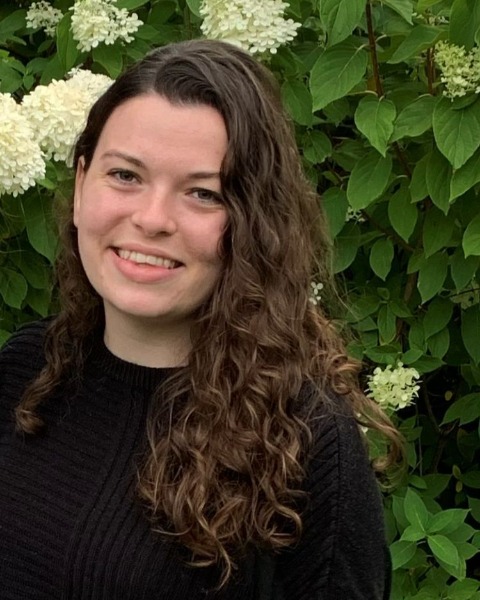Addictive Behaviors
(PS1-50) The Feasibility and Acceptability of Heart Rate Variability Biofeedback for Smoking Cessation
- KC
Kathleen E. Cummings, B.A.
Graduate Student
Rutgers University
Bayonne, New Jersey, United States - HB
Hannah Brinkman, M.S.
Graduate Student
Rutgers University
new brunswick, New Jersey, United States 
Danielle L. Hoyt, M.S.
Graduate Student
Rutgers, the State University of New Jersey
New Brunswick, New Jersey, New Jersey, United States- DM
Danielle E. McCarthy, Ph.D.
Professor
University of Wisconsin School of Medicine and Public Health
MADISON, Wisconsin, United States - SH
Sharon Hall, Ph.D.
Professor Emeritus
UNiversity of California San Francisco
San Francisco, California, United States - MB
Marsha E. Bates, Ph.D.
Distinguished Professor
Rutgers University
Piscataway, New Jersey, United States - PL
Paul M. Lehrer, Ph.D.
Robert Wood Johnson Medical School, Rutgers University
- SF
Samantha G. Farris, Ph.D.
Associate Professor
Rutgers University
New Brunswick, New Jersey, United States - TL
Teresa M. Leyro, Ph.D.
Associate Professor
Rutgers University
Greenwich, Connecticut, United States
Author(s)
Co-Author(s)
Introduction: Biobehavioral interventions that target physiological processes implicated in self-regulation, such as heart rate variability (HRV), may aid in the treatment of substance use, such as cigarette smoking. Heart rate variability biofeedback (HRVB) training teaches individuals how to increase their HRV by slowing breathing down to a rhythmic pace that aligns respiratory sinus arrhythmia with the baroreflex. This presentation reports the feasibility and acceptability of a Stage IB clinical trial investigating HRVB as a treatment adjunct to smoking cessation therapy (SCT) and nicotine replacement therapy (NRT) among adults attempting to quit.
Methods: Individuals who smoked at least five cigarettes daily (M=14.7, SD=7.1) and were motivated to quit were enrolled in this pilot study (n=28; Mage=38.2, SD=7.2; 53.57% Male; 89.29% Non-Hispanic/Latino; 64.29% White). The intervention took place over six weeks, beginning one week before quit day, and was primarily provided via a virtual format. Participants received seven 1-hour HRVB sessions, six 30-minute SCT sessions, and up to eight weeks of NRT patches. Participants were also incentivized to complete 20-minutes of HRVB practice daily, using a portable HRV monitor and iPhone app. Feasibility and acceptability data were collected using a Likert-type self-report questionnaire from 0=completely disagree to 4=completely agree at baseline (BL) and one-month post-quit (1MPQ), corresponding with the end of treatment.
Results: Of N=28 participants who enrolled and attended their first intervention session, n=19 completed treatment. On average, participants (n=19) attended 5.32 treatment sessions (SD=2.28) and spent 8.01 minutes per day practicing HRVB (SD=6.03). Participant ratings of intervention effectiveness, in terms of helping them quit and manage emotional distress, were moderately high at BL (M=3.0, SD=0.6) and 1MPQ (M=3.3, SD=0.6). Ratings of intervention appropriateness (BL: M=3.5, SD=0.5; 1MPQ: M=3.7, SD=0.5) and satisfaction and liking of the intervention (BL: M=3.2, SD=0.6; 1MPQ: M=3.7, SD=0.3) were also moderate to high. However, average ratings assessing the intervention’s ease of use and fit into daily lifestyle were lower (BL: M=2.7, SD=0.6; 1MPQ: M=2.6, SD=0.5). Finally, given the intervention’s novel use of technology for HRVB training, we queried interventionists for instances of technical issues. Out of 291 sessions, there were 117 sessions (40.2%) where interventionists reported 1 or more technical issues.
Discussion: Overall, these findings suggest that HRVB as an adjunct to an NRT-supported smoking cessation treatment is an acceptable intervention. However, the feasibility of the intervention should be taken into consideration. Relative limitations to this intervention, given its primarily remote delivery, include in-session technical issues and concerns regarding intervention ease while increasing HRVB utilization outside of treatment sessions. Further research is warranted to determine the long-term efficacy and scalability of HRVB as an adjunct treatment for smoking cessation.

.png)
